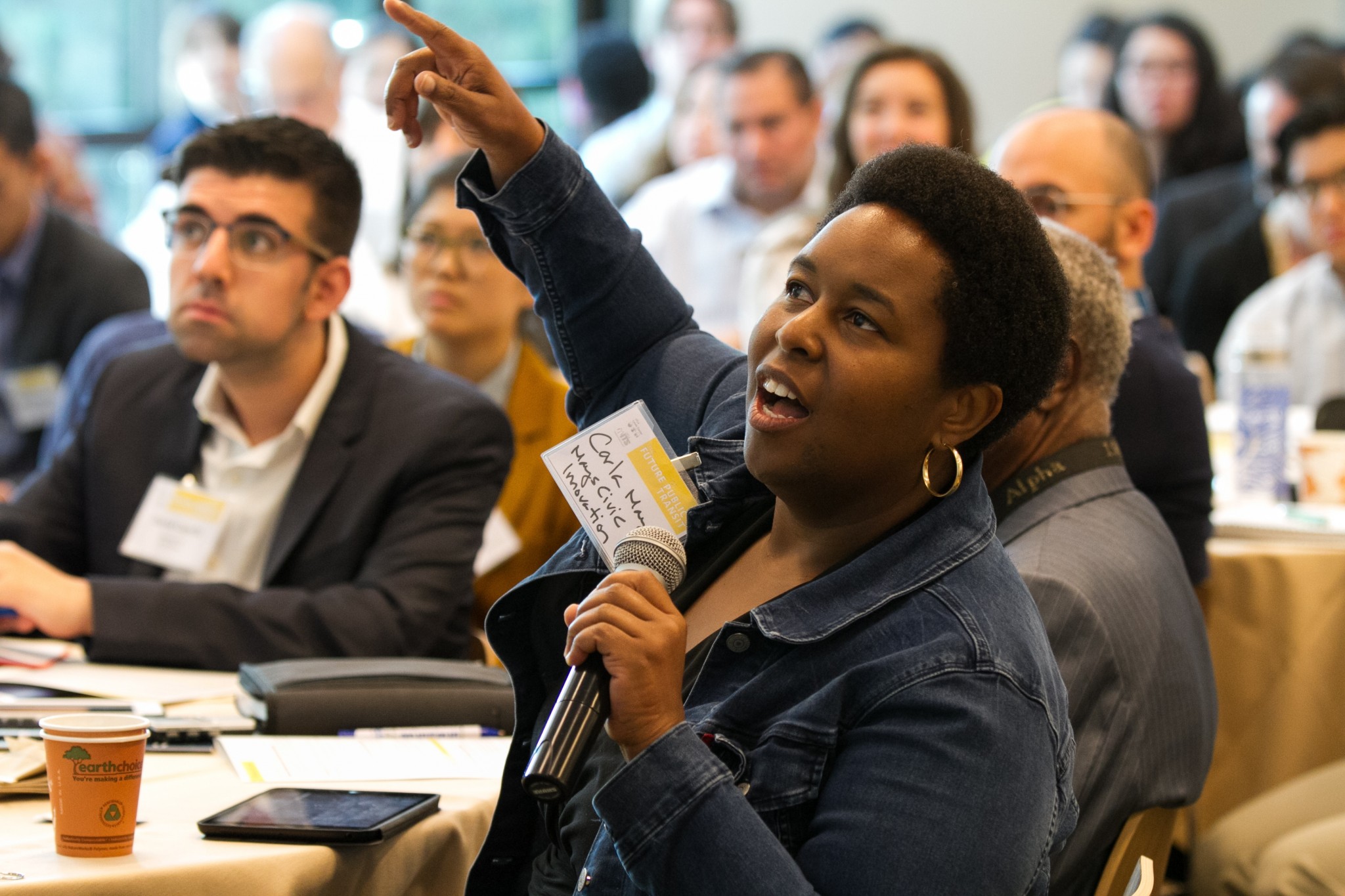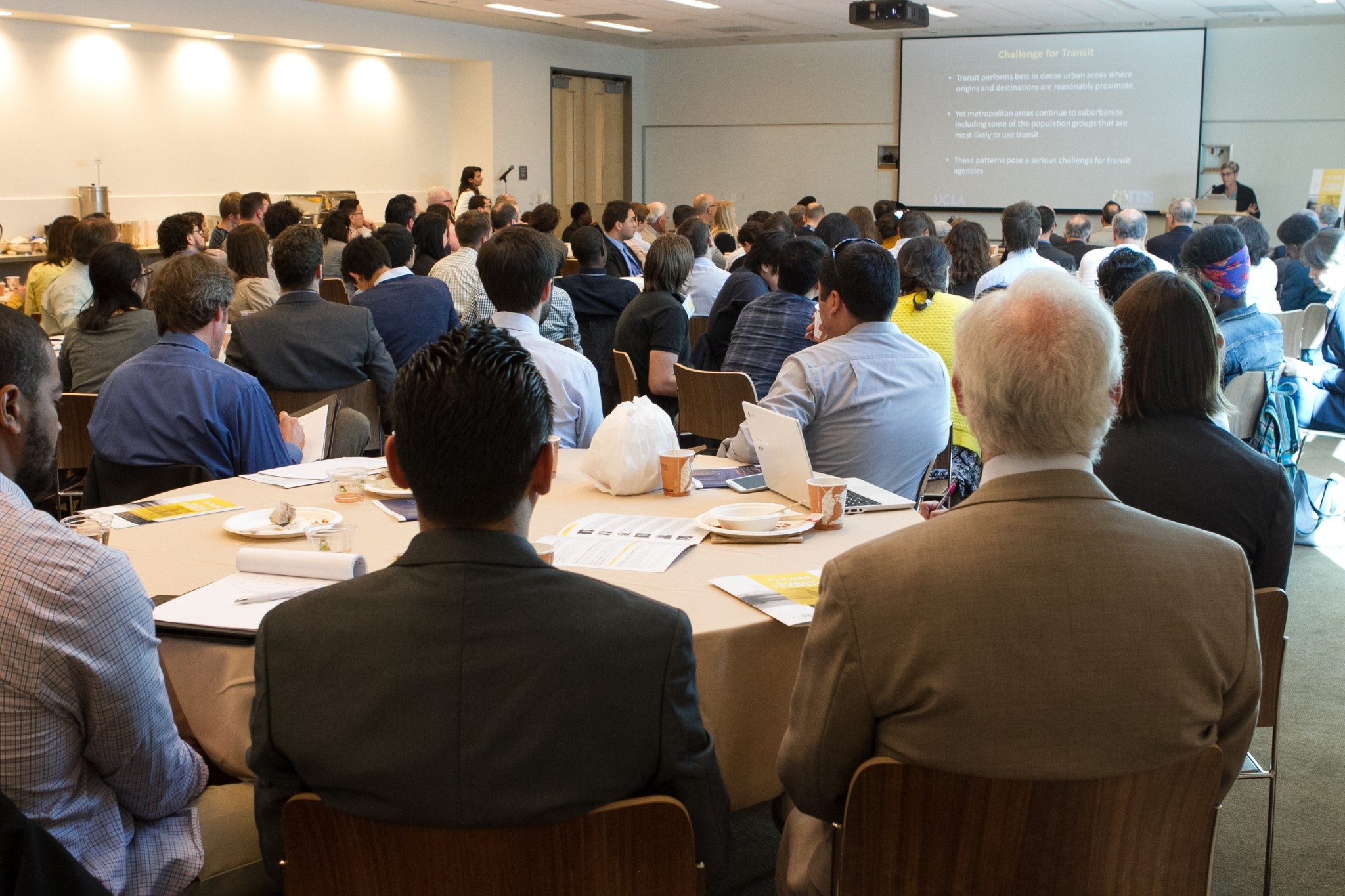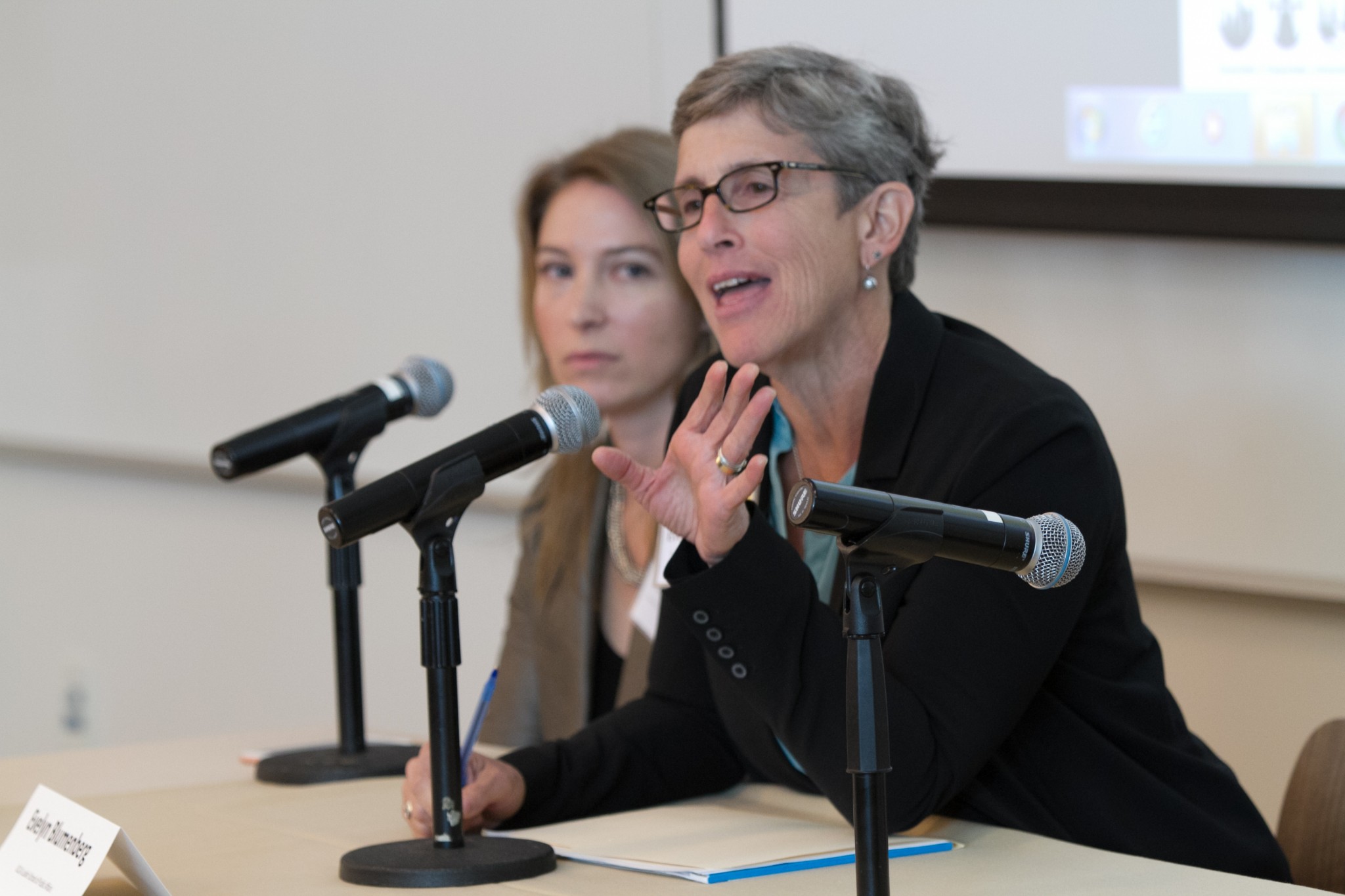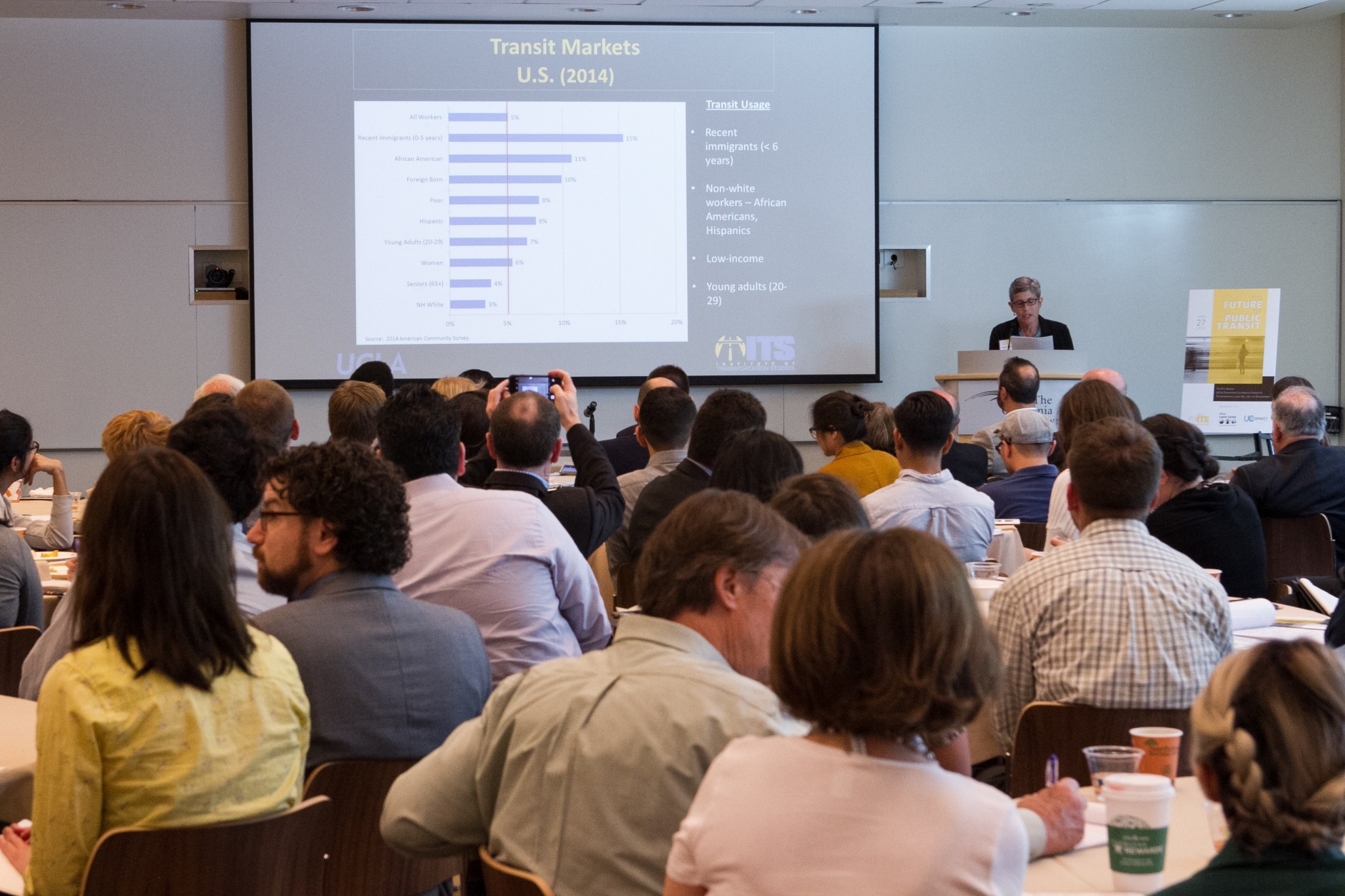Can we be confident about the future of public transit, both in Los Angeles and around the nation? On April 27, UCLA’s Lewis Center for Regional Policy Studies and Institute of Transportation Studies convened professors, policymakers, and administrators to answer this question at the 9th annual UCLA Downtown Los Angeles Forum on Transportation, Land Use, and the Environment. Los Angeles hasn’t had a problem building transit recently, with two major light-rail extensions opening in 2016 alone. But in his opening remarks, ITS Director Brian Taylor noted that “If you build it, they will come” isn’t cutting it anymore. What transit agencies need to ask is, “What happens after you build it?” How can these investments turn into actual riders?
The first panel, featuring Prof. Michael Manville of Cornell, Prof. Evelyn Blumenberg of UCLA, and Emily Castor of Lyft, examined transit ridership patterns and demographics in the aftermath of the Great Recession. Manville provided some context for news stories about transit-loving Millennials. For an extended period of time, from about 2003 to 2014, vehicle-miles traveled per capita declined in the U.S., a trend that was especially concentrated among young people. However, Manville noted that use of public transit did not increase at a rate that would signal that young people substituted transit for driving.
Transit use is heavily spatially skewed. “Driving is a nationwide phenomenon,” he explained. “Transit use is concentrated in a handful of older urban areas,” and 60% of all transit trips in the nation occur in “legacy areas” such as New York and Chicago, with longstanding transit traditions. While Los Angeles may have made news for its new investments in transit infrastructure, Manville argued that this “stunning revolution in the willingness to fund transit…hasn’t been accompanied by a willingness to ride it.” People who vote to support transit largely do so because they assume someone else will ride it.
Prof. Blumenberg presented her research on the demographics of transit ridership, which pointed out that the biggest U.S. users of transit are recent immigrants and young people. With more time in the country, recent immigrants tend to move away from dense urban areas with good transit service, making them more likely to buy cars. And while Millennials show more preference for city living compared to previous generations, the majority of them still live in suburbs or low-density areas where a car is needed. Blumenberg said that in order to gain ridership, transit agencies would need to work toward land-use reform that rectifies the “spatial mismatch” between employees in dense areas and jobs in the suburbs.
Rounding out the first panel, Emily Castor of Lyft shared thoughts on how ridesharing services can complement the work of transit agencies. Noting that the founder of Lyft began his career as a bus-riders’ advocate in Santa Barbara, Castor explained, “Our roads are filled with too many cars, but 80% of all the cars on the road are empty.” In particular, she cited some Los Angeles statistics making the case for Lyft as a transit complement: More than 40% of Lyft rides are Lyft Lines (carpools) in cities where that service is offered, and more than 20% of all rides in L.A. County begin or end at a rail station.
Los Angeles voters may be broadly in support of more transit services, but they’re divided on how to get there, and the Q&A session after the first panel reflected this. A number of attendees questioned whether L.A. Metro’s focus on rail construction over bus transit was really best for the city. Manville claimed that transit ridership in L.A. might be falling because “investments in certain routes that were politically popular have led to disinvestment in other routes” that serve a larger but poorer ridership base (about 75% of all Metro trips occur on the bus). Responding to a question about how Lyft might better serve low-income neighborhoods in L.A., where residents don’t have credit cards or the smartphone technology needed for ridesharing, Castor suggested a program of subsidies that might help households reduce the financial burden of car ownership.
Finally, there were two probing questions about the way we pay for roads. Metro has proposed a half-percent sales tax to fund its next round of capital expansion (this would be in addition to the half-percent sales tax that already exists from a 2008 ballot referendum). Isn’t a sales tax to fund transit regressive, one attendee asked? Another attendee took issue with Manville’s contention that road pricing was the only way to truly relieve traffic congestion, as such a pricing scheme might also have regressive effects. Manville responded that regressivity “isn’t a red flag, per se” — instead, it’s largely a matter of what kinds of projects these taxes will fund. With that, the stage was set for the next panel of transit-agency staff to talk about their plans for the future.
—by Jordan Fraade
Part 2 of the DTLA Forum Recap.
Speakers’ presentation slides
The Future of Public Transit
Brian Taylor
Does the Driving Decline Portenda Transit Ridership Surge?
Michael Manville
Taste for Transit? Youth, Immigrants, and Transit use Trends in the U.S
Evelyn Blumenberg
Emily Castor



